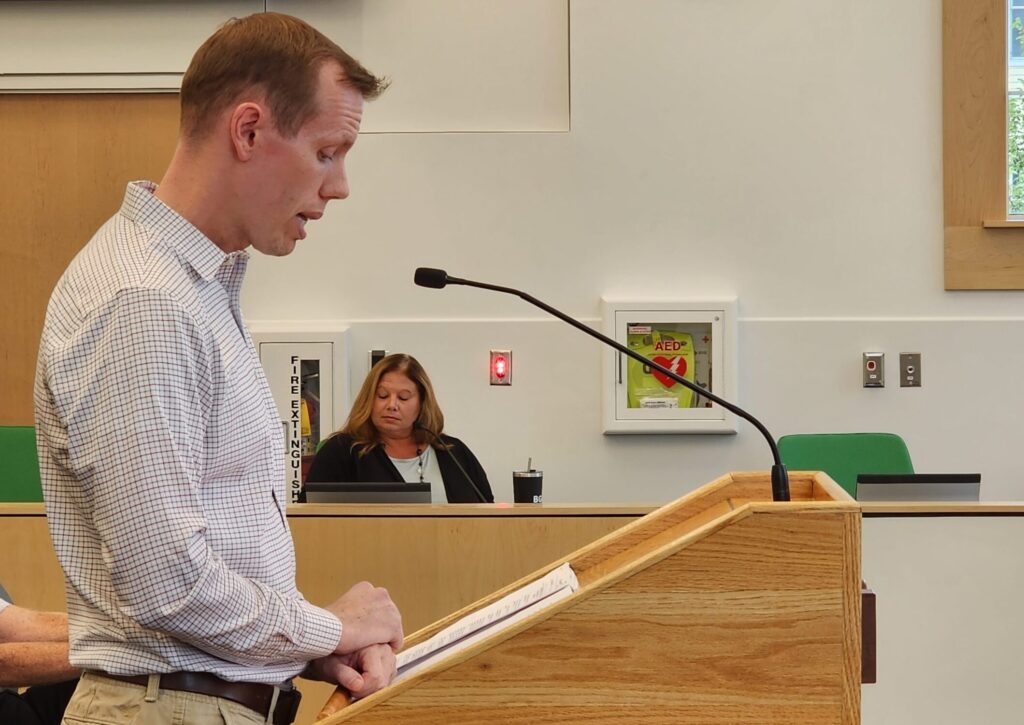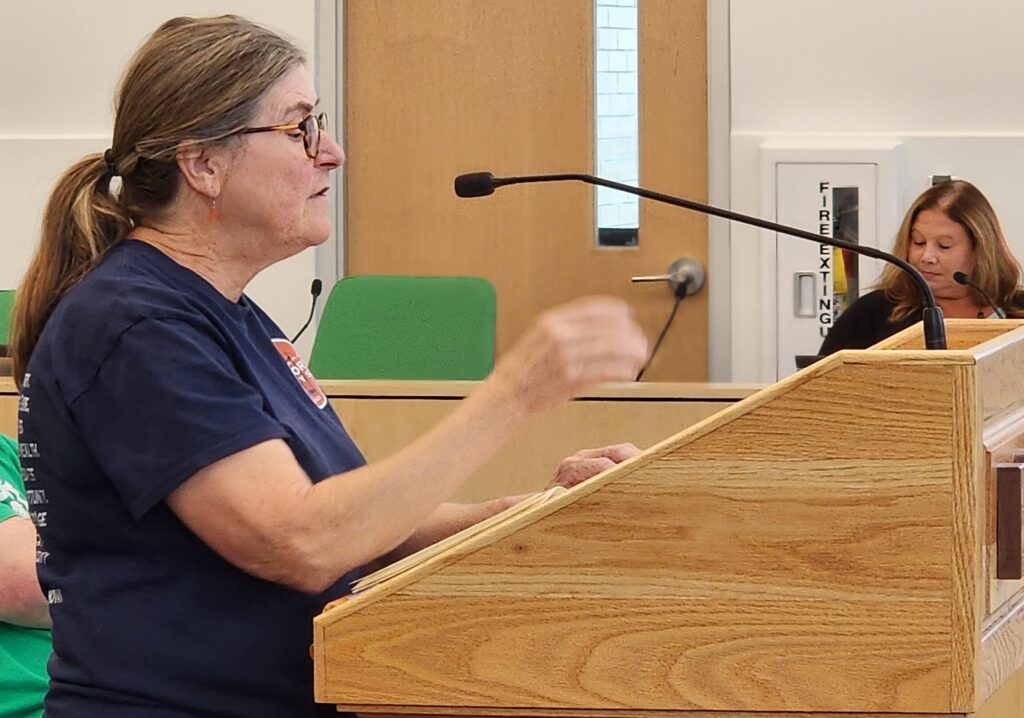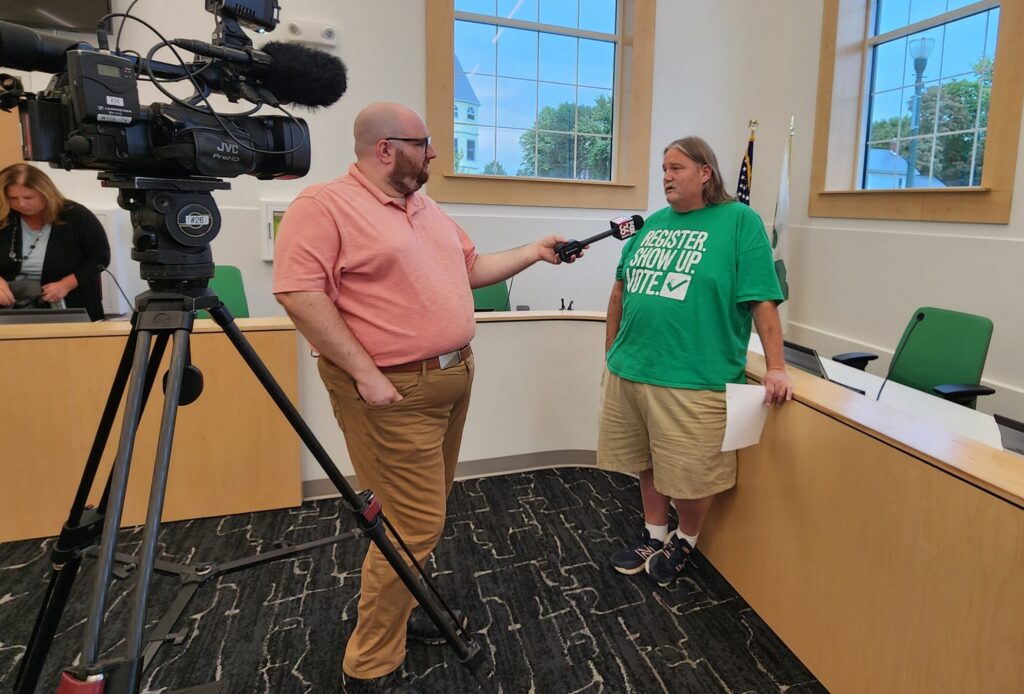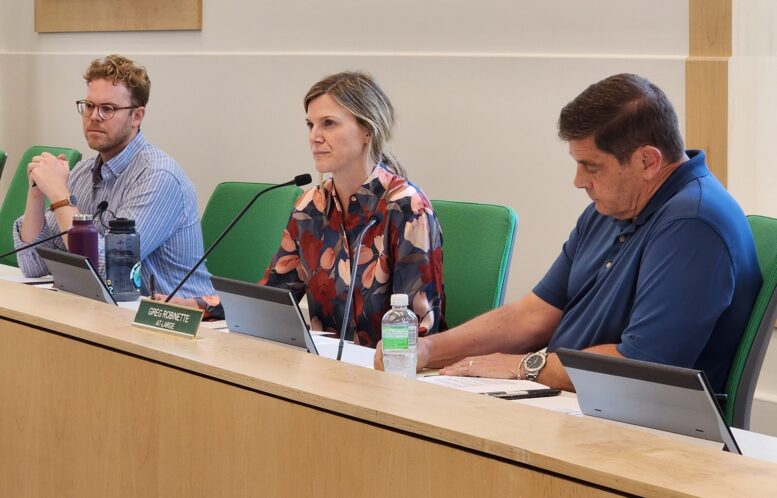By JAN LARSON McLAUGHLIN
BG Independent News
It was a tale of two cities at a public hearing Thursday evening in Bowling Green.
A landlord described the city with booming property values. And a resident described the blight in neighborhoods.
The question is – will a proposed amendment to the zoning ordinance hurt or harm the city.
An effort to bring home occupancy numbers into compliance was called bad for business and for renters, by David Maurer of Greenbriar. It was also called too weak and too slow – but better than the status quo, by Rose Drain, a resident who lives in an area populated by rentals.
City Council’s Planning, Zoning and Economic Development Committee, made up of council members Rachel Phipps, Greg Robinette and Nick Rubando, held a public hearing Thursday evening on the proposed ordinance amendment that would sunset non-conforming zoning uses due to over-occupancy in the city after 28 years. The ordinance change is intended to make properties conform to their zoning designation.

For many years, the city limited the number of people living legally in a rental home to three unrelated people. That policy was challenged in court, and the city now restricts the resident number to one per bedroom.
The primary non-conforming properties in the city are rental housing properties, Council President Mark Hollenbaugh said last month. Such “grandfathered” properties can house far more renters than under the current zoning code, he said.
Hollenbaugh said Bowling Green currently has “several hundred” properties considered pre-existing and non-conforming with the zoning code.
City Planning Director Heather Sayler said the city has record of 22 rental houses in Bowling Green, where the number of unrelated residents exceeds the number of bedrooms.
If the ordinance is adopted, “in 28 years, all properties have to adhere to the zoning code,” Hollenbaugh said.
Currently, many properties are “grandfathered in,” meaning the old zoning continues to apply to existing uses, while the new zoning will apply to all future cases.
Hollenbaugh pointed out that City Council considered a similar ordinance in 1989. If that had passed, it would have gone into effect in 2019, he said.
The period of 28 years was selected because the city has to give someone who just bought a property the chance to recoup their investment. The IRS considers that period to extend 27.5 years.
With the adoption of the city’s updated zoning code earlier this year, the amendment would mean an end to non-conforming uses.
“There would be no grandfathered property after 28 years,” Hollenbaugh said. “We have 28 years to prepare for it. It’s not going to be an overnight change.”

Speaking from the landlord’s perspective, Maurer suggested that the community first become acquainted with the city’s new zoning code, which upon first reading can appear like “130 pages of gobbledygook,” he said.
Maurer said the ordinance amendment is based on a false narrative that does not serve the community. Passage of it will decrease the value of rental properties, he said.
“As soon as this ordinance passes, it’s going to diminish the value of those immediately,” he said.
Maurer was critical of the ordinance wording, which speaks of maintaining the aesthetic harmony of the community. “I don’t even know what that means,” he said.
He also questioned the reference to “blighted areas.”
“I need someone to show me where they are,” Maurer said, noting that he called the Wood County Auditor’s Office to ask about blight in Bowling Green. He was informed that residential property values in the city have gone up 25% since the last valuation.
“Property values in Bowling Green are going through the roof,” he said.
Maurer said the ordinance will result in increased costs of rental housing and decreased housing options.
“I believe it’s an attack on rentals,” he said, adding that the legislation treats college students as “second class citizens.”
The ordinance will also discourage investments in rental housing, Maurer said.
“This doesn’t seem very business friendly,” he said, also citing the city’s required licensing and self-inspections of rental units as harmful to landlords. “Landlords don’t want their investments to decrease.”

Drain, a member of BG Strong and a homeowner on the East Side, challenged the notion that there is no blight in Bowling Green. She reported on findings from several volunteers who were sent out to document poor exterior conditions of rental properties. She listed off broken storm doors, deteriorating stairs, and unpainted exteriors among the common problems.
“There is blight. I guess you just have to get up close,” Drain said. “We think people living in rental properties deserve better.”
Drain and others in the BG Strong group see the ordinance as being too little, too slow. The ordinance has flaws, with one member describing it as having “almost absurd weaknesses.”
Drain said the ordinance moves too slowly – not going into effect until 28 years. “As it stands, any positive impact will be a generation and a half away.”
But Drain applauded the ordinance’s goals “to protect the appearance of the city as a whole, promote revitalization and inject vitality in all of the city’s residential neighborhoods, protect the value of residential property, lessen over-crowding of residential neighborhoods in respect to occupancy of living units, congested traffic and parking problems, overly burdened municipal services, and the general decay of the community atmosphere and neighborhoods caused by overcrowding and over-use of structures.”
The BG Strong organization agrees with the statement that “pre-existing uses with respect to the occupancy level of structures contribute to blight conditions that impede the revitalization of the declining neighborhoods in those districts.”
The words blight and nuisances are used over and over in the proposed ordinance, Drain noted. “Good for you for speaking that truth and bringing it to the attention of citizens, business owners and community investors in this public way.”
The ordinance will come before City Council at its next meeting on Sept. 18.
“Let’s do this now, so we’re not having this conversation 28 years from now,” Hollenbaugh said after the meeting.


